Música de Japón
+37
korngan
the rover
freakedu
Kako
Dama de Shalott
lacan
albichuela
fuzzy
Wyno
Kupak
el barón
Hank
ALM
georgino
Klarkash-Ton
Peaky Blinder
Ihsahn
Caffeine
millino
Holland
Loza
Gallardo
crancranc
BlueStarRider
káiser
Axlferrari
Bela Lugosi's dad
MrYggdrasil
Shanks
melon head
Rikileaks
celtasnake
sapir
Jud
ruso
firecorner
Lucoc
41 participantes
Página 1 de 20.
Página 1 de 20. • 1, 2, 3 ... 10 ... 20 
 Música de Japón
Música de Japón
Todo un mundo en el que estoy empezando a adentrarme.
Este segundo disco de Yoshiko Sai (1976) es una maravilla de folk con toques progresivos y ácidos. Y qué portadas!
Este segundo disco de Yoshiko Sai (1976) es una maravilla de folk con toques progresivos y ácidos. Y qué portadas!
Última edición por Lucoc el Jue 12 Oct 2023 - 17:38, editado 2 veces
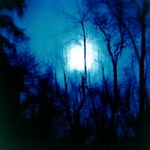
Lucoc- Mensajes : 1212
Fecha de inscripción : 27/11/2017
 Re: Música de Japón
Re: Música de Japón
De Japón hubo una época que estaba enganchadísimo a los Tokyo Ska Paradise Orchestra y en especial al Full-Tension Beaters del año 2000.
Con temazos como éstos dos:
Filmmakers Bleed
5 days of Tequila
Con temazos como éstos dos:
Filmmakers Bleed
5 days of Tequila

firecorner- Mensajes : 6315
Fecha de inscripción : 04/05/2017
 Re: Música de Japón
Re: Música de Japón
Me acabo de poner el disco de Yoshiko Sai.


sapir- Mensajes : 135956
Fecha de inscripción : 18/10/2011
 Re: Música de Japón
Re: Música de Japón
sapir escribió:Me acabo de poner el disco de Yoshiko Sai.

Maravilloso que con spotify en 5 segundos puedas estar escuchando un disco que acabas de conocer.




sapir- Mensajes : 135956
Fecha de inscripción : 18/10/2011
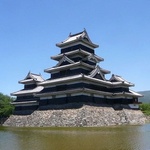
celtasnake- Mensajes : 47597
Fecha de inscripción : 09/05/2008

celtasnake- Mensajes : 47597
Fecha de inscripción : 09/05/2008

celtasnake- Mensajes : 47597
Fecha de inscripción : 09/05/2008
 Re: Música de Japón
Re: Música de Japón
Ya está, otra vez mil discos que escuchar. Imposible dar abasto así.




sapir- Mensajes : 135956
Fecha de inscripción : 18/10/2011

celtasnake- Mensajes : 47597
Fecha de inscripción : 09/05/2008
 Re: Música de Japón
Re: Música de Japón
Este es el tercer àlbum, con toques de flamenco.celtasnake escribió:Lucoc escribió:Todo un mundo en el que estoy empezando a adentrarme.
Este segundo disco de Yoshiko Sai (1976) es una maravilla de folk con toques progresivos y ácidos. Y qué portadas!
Maravilloso disco.
Este tampoco está mal:
Y con otra portada alucinante


Lucoc- Mensajes : 1212
Fecha de inscripción : 27/11/2017

celtasnake- Mensajes : 47597
Fecha de inscripción : 09/05/2008
 Re: Música de Japón
Re: Música de Japón
celtasnake escribió:Un rollo muy diferente se llevan estos locos llamados Maximum the hormone.
Imprescindible ver el vídeo hasta el final.


Me lo enseñaron hace no mucho
Última edición por Rikileaks el Vie 27 Abr 2018 - 12:03, editado 1 vez

Rikileaks- Mensajes : 83018
Fecha de inscripción : 17/01/2012
 Re: Música de Japón
Re: Música de Japón
celtasnake escribió:Un rollo muy diferente se llevan estos locos llamados Maximum the hormone.
Imprescindible ver el vídeo hasta el final.
Este ya lo habías puesto en el foro. ¡Grande ese final!

sapir- Mensajes : 135956
Fecha de inscripción : 18/10/2011

celtasnake- Mensajes : 47597
Fecha de inscripción : 09/05/2008

celtasnake- Mensajes : 47597
Fecha de inscripción : 09/05/2008

celtasnake- Mensajes : 47597
Fecha de inscripción : 09/05/2008
 Re: Música de Japón
Re: Música de Japón
celtasnake escribió:Un rollo muy diferente se llevan estos locos llamados Maximum the hormone.
Imprescindible ver el vídeo hasta el final.

Joder....

firecorner- Mensajes : 6315
Fecha de inscripción : 04/05/2017
 Re: Música de Japón
Re: Música de Japón
Dándole al Punk tienen cosas muy guapas
THEE MICHELLE GUN ELEPHANT
Cantando en Japones (La guitarra de este tema es espectacular)
THEE MICHELLE GUN ELEPHANT
Cantando en Japones (La guitarra de este tema es espectacular)
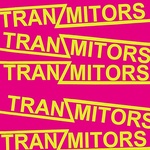
melon head- Mensajes : 14685
Fecha de inscripción : 28/03/2008

celtasnake- Mensajes : 47597
Fecha de inscripción : 09/05/2008

celtasnake- Mensajes : 47597
Fecha de inscripción : 09/05/2008

celtasnake- Mensajes : 47597
Fecha de inscripción : 09/05/2008

celtasnake- Mensajes : 47597
Fecha de inscripción : 09/05/2008
 Re: Música de Japón
Re: Música de Japón
Este disco me ha molado mucho:
Haru Nemuri - harutosyura

Mezcla de Noise Rock, Hip Hop y J-pop bastante fresca.
Haru Nemuri - harutosyura

Mezcla de Noise Rock, Hip Hop y J-pop bastante fresca.
 Re: Música de Japón
Re: Música de Japón
MrYggdrasil escribió:Este disco me ha molado mucho:
Haru Nemuri - harutosyura
Mezcla de Noise Rock, Hip Hop y J-pop bastante fresca.

sapir- Mensajes : 135956
Fecha de inscripción : 18/10/2011
 Re: Música de Japón
Re: Música de Japón
joder, dos páginas y nadie ha hablado de Ningen Isu (人間椅子)... predico en el desierto 
Grupo con años de recorrido, desde finales de los 80... han tocado varios palos hard rock / prog / heavy / metal
Los primeros discos son más sabáticos, luego pasaron a una fase más prog (sobre todo los años en los que estuvo en la banda Masuhiro Gotô, para mi el mejor baterista de japón), y los últimos tiempos han ido tirando más hacia el metal (pero teniendo como siempre los riffs de corte Iommi muy presentes). Todo esto siempre aderezado con elementos de la cultura japonesa.
Ahí van algunas tonadas:
De los miles de solos de guitarra que puedo escuchar al cabo del año, sólo uno de cada cien me hace levantar una ceja...y uno de cada mil me pone los pelos de punta. este tema tiene uno de esos (min 3:08). El tema al completo es un TEMAZO.
"María en la glándula tiroides" una baladita, en la que un amante le habla a su amada desde la profundidad de sus tripas, ya que esta se lo ha comido:
de los últimos tiempos:
esta tiene un final épico acojonante, con unos ooohhss muy de cantar por fans de maiden:
En directo a día de hoy son una apisonadora, los videoclips suelen ser bastante graciosos.

Grupo con años de recorrido, desde finales de los 80... han tocado varios palos hard rock / prog / heavy / metal
Los primeros discos son más sabáticos, luego pasaron a una fase más prog (sobre todo los años en los que estuvo en la banda Masuhiro Gotô, para mi el mejor baterista de japón), y los últimos tiempos han ido tirando más hacia el metal (pero teniendo como siempre los riffs de corte Iommi muy presentes). Todo esto siempre aderezado con elementos de la cultura japonesa.
Ahí van algunas tonadas:
De los miles de solos de guitarra que puedo escuchar al cabo del año, sólo uno de cada cien me hace levantar una ceja...y uno de cada mil me pone los pelos de punta. este tema tiene uno de esos (min 3:08). El tema al completo es un TEMAZO.
"María en la glándula tiroides" una baladita, en la que un amante le habla a su amada desde la profundidad de sus tripas, ya que esta se lo ha comido:
de los últimos tiempos:
esta tiene un final épico acojonante, con unos ooohhss muy de cantar por fans de maiden:
En directo a día de hoy son una apisonadora, los videoclips suelen ser bastante graciosos.
 Re: Música de Japón
Re: Música de Japón
Las chicas de FLiP se separaron en 2016 ya que, según se rumorea, Universal quería que se transformaran en grupo pop, a lo cual ellas se negaron.
 Re: Música de Japón
Re: Música de Japón
Shibusa Shirazu Orchestra montan unos shows bastante curiosos

Rikileaks- Mensajes : 83018
Fecha de inscripción : 17/01/2012
 Re: Música de Japón
Re: Música de Japón
A mí me gusta mucho la música de Japón.

Gallardo- Mensajes : 9500
Fecha de inscripción : 24/06/2011
 Re: Música de Japón
Re: Música de Japón
llego tarde pero ichiko aoba

Loza- Mensajes : 14364
Fecha de inscripción : 06/01/2015
 Re: Música de Japón
Re: Música de Japón
MrYggdrasil escribió:Este disco me ha molado mucho:
Haru Nemuri - harutosyura
Mezcla de Noise Rock, Hip Hop y J-pop bastante fresca.
Muy majete ese tema del vídeo. Curiosamente la parte vocal, sobre todo el estribillo, tiene una sonoridad muy parecida al euskera.

BlueStarRider- Mensajes : 10844
Fecha de inscripción : 17/11/2018
 Re: Música de Japón
Re: Música de Japón
BlueStarRider escribió:MrYggdrasil escribió:Este disco me ha molado mucho:
Haru Nemuri - harutosyura
Mezcla de Noise Rock, Hip Hop y J-pop bastante fresca.
Muy majete ese tema del vídeo. Curiosamente la parte vocal, sobre todo el estribillo, tiene una sonoridad muy parecida al euskera.
Si, el japonés en general tiene estructuras y sonoridad muy parecidas al euskera. Estudié japo 2 años en la escuela de idiomas y nuestra profesora era una japonesa que lleva aquí unos 35 años y es traductora, y traduce libros del euskera al japonés y viceversa

millino- Mensajes : 25403
Fecha de inscripción : 19/09/2013
 Re: Música de Japón
Re: Música de Japón
Thee Michelle Gun Elephant es top, nunca viene mal recordarlos
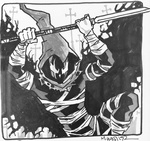
Caffeine- Mensajes : 14217
Fecha de inscripción : 15/02/2015
 Re: Música de Japón
Re: Música de Japón
Hoy he comprado la entrada para Babymetal.
Pero donde esté Koenji Hyakkei que se quite el resto del mundo
Pero donde esté Koenji Hyakkei que se quite el resto del mundo

Ihsahn- Mensajes : 2969
Fecha de inscripción : 21/09/2017
 Re: Música de Japón
Re: Música de Japón
millino escribió:BlueStarRider escribió:MrYggdrasil escribió:Este disco me ha molado mucho:
Haru Nemuri - harutosyura
Mezcla de Noise Rock, Hip Hop y J-pop bastante fresca.
Muy majete ese tema del vídeo. Curiosamente la parte vocal, sobre todo el estribillo, tiene una sonoridad muy parecida al euskera.
Si, el japonés en general tiene estructuras y sonoridad muy parecidas al euskera. Estudié japo 2 años en la escuela de idiomas y nuestra profesora era una japonesa que lleva aquí unos 35 años y es traductora, y traduce libros del euskera al japonés y viceversaEn clase, varias veces nos puso ejemplos de estructuras en euskera y japonés para mostrarnos que eran muy parecidas y nos dijo que el que supiera euskera tendría bastante más facilidad para aprender japo
Es que el estribillo parece decir directamente "kate hau puskatzen", con acento labortano

BlueStarRider- Mensajes : 10844
Fecha de inscripción : 17/11/2018
 Re: Música de Japón
Re: Música de Japón
Dejo aquí unas cuantas maravillas que me ha recomendado desinteresadamente mi querido amigo YouTube. Vamos con un poco de ese ambient synth minimalista típico marca de la casa de los 80 y 90:
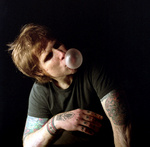
Peaky Blinder- Mensajes : 3454
Fecha de inscripción : 12/03/2010
 Re: Música de Japón
Re: Música de Japón
Peaky Blinder escribió:Dejo aquí unas cuantas maravillas que me ha recomendado desinteresadamente mi querido amigo YouTube. Vamos con un poco de ese ambient synth minimalista típico marca de la casa de los 80 y 90:
Lo primero que se me ha venido a la cabeza ha sido este Komachi de Meitei. Así lo comentan en bandcamp: "Though confidently contemporary, like a bucolic J-Dilla, Komachi’s lineage can be traced back to the floating worlds of Ukiyo-e and Gagaku via the prism of 80s Japanese ambient pioneers, and 90s pastoral sample-based artists such as Susumu Yokota and Nobukazu Takemura". Maravilla de disco.

Klarkash-Ton- Mensajes : 1022
Fecha de inscripción : 10/03/2015
 Re: Música de Japón
Re: Música de Japón
Trends in music can often indicate cultural shifts; a zeitgeist-y reflection of our surrounding socio-political climates and anxieties. It’s safe to say that, in recent years, tensions have increased; we’re living in a divisive era of American politics, people keep talking about millennial dread, and technology in art is often interlinked with the collapse of humanity. Far from being arbitrary patterns, a surge of interest in soothing, ambient sounds aligns with times of uncertainty.
Last year, ambient came back in a big way. A knock-on effect is the rediscovery of previously forgotten Japanese ambient and new age records from the 80s. Long-buried works have been peeled from their original casings, uploaded onto YouTube and propelled into cult classics. Though many of these artists weren’t recognised for their works at the time of their making, diggers and online enthusiasts cite the 80s as a golden era for Japanese ambience, with YouTube algorithms spurring hundreds of thousands of views online and highly sought after rarities selling for several hundreds of pounds via Discogs. However, speaking to Vinyl Factory in a 2017 interview, pioneering composer Midori Takada said she “didn’t feel part of a mainstream movement”, working mainly with a small collective of like-minded artists, such as collaborator Satoshi Ashikawa.
Befitting our current era, the appeal of these ambient LPs from the 80s is their focus on enhancing, and shifting, existing environments. Rather than offering a reprieve in the form of an escape, many of these Japanese artists practised sound design as a way to complement or alter physical locations into spaces of serenity and stillness.
Ranging from Hiroshi Yoshimura’s environmental music to Midori Takada’s cult classic Through the Looking Glass, here are seven primers you should acquaint yourself with (if you haven’t already), as an introduction into Japanese ambient and new age records that, previously, were lost in obscurity.
01
Hiroshi Yoshimura
Green (1986)
Now highly regarded as an ambient pioneer, Hiroshi Yoshimura’s musical trajectory began via the craft of soundtracking fashion runways and train stations. With an output of 12 albums over a two decade career, this landmark LP perfectly encapsulates Yoshimura’s philosophy of creating a dialogue between sounds and spatial environments. Green is an example of Japanese minimalism at its finest, with the melding of natural sounds – via birds, running water and crickets – to the artificiality of arpeggiating synths and soft, minimal notes deployed to poignant effect. The result is a soundscape of light, soothing textures for listeners to sink into.
02
Haruomi Hosono
Watering a Flower (1984)
Alongside Ryuichi Sakamoto and Yukihiro Takahashi, Haruomi Hosono is best known as a co-founder of the famed electropop outfit Yellow Magic Orchestra. A highly influential artist who first began making music in the psychedelic rock group Apryl Fool, in 2003 HMV Japan ranked Hosono as the 44th most vital composer in the country. Diverging from the harder sounds of psych rock, Watering a Flower sees Hosono weave a more meditative soundscape, filled with hypnotic refrains. Buoyant synth lines on Growth segue into the calmness of Muji Original BGM, which employs warm, glowing synths that reverberate through the dense fabric of the track. Comprised of three songs, Watering a Flower was commissioned as background music for Muji’s flagship store in Tokyo. Only one track was used at the time, and the cassette has since become a rarity buried in the sands of time.
03
Mkwaju Ensemble
Ki-Motion (1981)
The short-lived Japanese trio, made up of percussionists Junko Arase, Midori Takada and Yoji Sadanari, crafted their vision into just two albums in 1981, named Mkwaju and Ki-Motion. Experimentations with layered African rhythms, bamboo percussion and marimbas form the backbone of each LP. Released via the Japanese imprint Better Days, Ki-Motion is fleshed out with more meditative tracks than its predecessor, employing gloomy marimbas and glittering textures that are woven into a tapestry of playful ambience. There’s still room for the group’s more chaotic experimentations though, with charged rhythms propelling the album out of its gentler, sombre moments into clashing, near-cacophonous excursions.
04
Midori Takada
Through the Looking Glass (1983)
A cult ambient album that was never released on CD until 2017, its reissue was engineered by Brooklyn label Palto Flats and Swiss imprint We Release Whatever the Fuck We Want. After the retirement of Mkaju Ensemble, the group’s distinct mix of sounds naturally evolved past their short-lived existence, threading through Takada’s solo debut Through the Looking Glass in 1983. Bunkering down in her studio for two days, the album was created entirely on analogue tape and it sees Takada explore a range of instruments, from marimbas to gongs, cowbells and rattles, combining her experimentations with non-Western rhythms. Bird sounds were imitated through ocarinas and, after failing to craft her desired sonics through sake bottles, Takada began experimenting with Coca-Cola glasses. Using a painterly approach, the pioneer visualised sound design as brush strokes on a sonic canvas, producing four ambient designs that close with the charged curveball, Catastrophe Σ. A mystical output, the classic follows her DIY approach in manipulating accessible objects into musical components. “Everything that exists on this earth has a sound,” she once said. “Even if humans don’t call it an instrument, on this earth, there exists a significant vibrancy.”
05
Satoshi Ashikawa
Still Way (1982)
Another compelling obscurity, Still Way contains the only available recordings ever made by Ashikawa, and it’s the second instalment of his three-part Wave Notation series. Fellow contemporary Midori Takada has been credited as a percussionist, having contributed to the album’s enchanting quality with the vibraphone and harp. In the liner notes, Ashikawa wrote about how daily life in Japan was “inundated with sound” and the album exercises his ethos of employing sound to psychologically aid listeners in gaining individualistic control over their hearing. It was Ashikawa’s way of finding a “conscious attitude” to sound, allowing him to filter out background noise that he deemed to be excessive. To create this focus, Still Way captures his mastery of intertwining clear, tinkering harps with minor key piano melodies and the horn to create soporific designs.
06
Yasuaki Shimizu
Kakashi (1982)
Re-pressed by Palto Flats and WRWTFWW in 2017, Kakashi deviates from the other chosen LPs in this list, taking the form of a brilliant jazz, ambient and new age fusion that touches upon new wave and dub sounds. As the bandleader of Japanese group Mariah, the multi-hyphenate is also an esteemed saxophonist and prolific collaborator, having worked with famed composer Ryuichi Sakamoto, DJ Towa Tei and commercial titans such as Honda. His output with Mariah later saw him bring his explorative approach to the table, drawing upon a medley of border-crossing influences; and it’s this wide-ranging palette that dominates Kakashi, with jazz, pop and saxophone experimentations percolating through his solo work.
07
Hiroshi Yoshimura
Music for Nine Post Cards
Last year, ambient enthusiast Spencer Doran, of Portland duo Visible Cloaks, teamed up with Maxwell August Croy of Root Strata to launch the label Empire of Signs with a reissue of Yoshimura’s debut LP Music for Nine Post Cards. With a minimal setup of a keyboard and Fender Rhodes, the LP began organically when Yoshimura peered out of his window one afternoon, and saw “images of the movement of clouds, the shade of a tree in summer time, the sound of rain”. Later, at the Hara Museum of Contemporary Art, Yoshimura began creating sounds inspired by the space. Originally released to soundtrack the institution, a demand for his sounds culminated in a vinyl release in 1982. Built upon a foundation of nine short refrains, each track blossoms and unfolds to the gradual movement of clouds Yoshimura saw outside his window that day. In the liner notes of the original release, he wrote, “I will be happy if, when you enjoy this album, the surrounding scenery can be seen in a slightly different light.”
https://crackmagazine.net/article/lists/introduction-7-japanese-ambient-new-age-records-80s/
Last year, ambient came back in a big way. A knock-on effect is the rediscovery of previously forgotten Japanese ambient and new age records from the 80s. Long-buried works have been peeled from their original casings, uploaded onto YouTube and propelled into cult classics. Though many of these artists weren’t recognised for their works at the time of their making, diggers and online enthusiasts cite the 80s as a golden era for Japanese ambience, with YouTube algorithms spurring hundreds of thousands of views online and highly sought after rarities selling for several hundreds of pounds via Discogs. However, speaking to Vinyl Factory in a 2017 interview, pioneering composer Midori Takada said she “didn’t feel part of a mainstream movement”, working mainly with a small collective of like-minded artists, such as collaborator Satoshi Ashikawa.
Befitting our current era, the appeal of these ambient LPs from the 80s is their focus on enhancing, and shifting, existing environments. Rather than offering a reprieve in the form of an escape, many of these Japanese artists practised sound design as a way to complement or alter physical locations into spaces of serenity and stillness.
Ranging from Hiroshi Yoshimura’s environmental music to Midori Takada’s cult classic Through the Looking Glass, here are seven primers you should acquaint yourself with (if you haven’t already), as an introduction into Japanese ambient and new age records that, previously, were lost in obscurity.
01
Hiroshi Yoshimura
Green (1986)
Now highly regarded as an ambient pioneer, Hiroshi Yoshimura’s musical trajectory began via the craft of soundtracking fashion runways and train stations. With an output of 12 albums over a two decade career, this landmark LP perfectly encapsulates Yoshimura’s philosophy of creating a dialogue between sounds and spatial environments. Green is an example of Japanese minimalism at its finest, with the melding of natural sounds – via birds, running water and crickets – to the artificiality of arpeggiating synths and soft, minimal notes deployed to poignant effect. The result is a soundscape of light, soothing textures for listeners to sink into.
02
Haruomi Hosono
Watering a Flower (1984)
Alongside Ryuichi Sakamoto and Yukihiro Takahashi, Haruomi Hosono is best known as a co-founder of the famed electropop outfit Yellow Magic Orchestra. A highly influential artist who first began making music in the psychedelic rock group Apryl Fool, in 2003 HMV Japan ranked Hosono as the 44th most vital composer in the country. Diverging from the harder sounds of psych rock, Watering a Flower sees Hosono weave a more meditative soundscape, filled with hypnotic refrains. Buoyant synth lines on Growth segue into the calmness of Muji Original BGM, which employs warm, glowing synths that reverberate through the dense fabric of the track. Comprised of three songs, Watering a Flower was commissioned as background music for Muji’s flagship store in Tokyo. Only one track was used at the time, and the cassette has since become a rarity buried in the sands of time.
03
Mkwaju Ensemble
Ki-Motion (1981)
The short-lived Japanese trio, made up of percussionists Junko Arase, Midori Takada and Yoji Sadanari, crafted their vision into just two albums in 1981, named Mkwaju and Ki-Motion. Experimentations with layered African rhythms, bamboo percussion and marimbas form the backbone of each LP. Released via the Japanese imprint Better Days, Ki-Motion is fleshed out with more meditative tracks than its predecessor, employing gloomy marimbas and glittering textures that are woven into a tapestry of playful ambience. There’s still room for the group’s more chaotic experimentations though, with charged rhythms propelling the album out of its gentler, sombre moments into clashing, near-cacophonous excursions.
04
Midori Takada
Through the Looking Glass (1983)
A cult ambient album that was never released on CD until 2017, its reissue was engineered by Brooklyn label Palto Flats and Swiss imprint We Release Whatever the Fuck We Want. After the retirement of Mkaju Ensemble, the group’s distinct mix of sounds naturally evolved past their short-lived existence, threading through Takada’s solo debut Through the Looking Glass in 1983. Bunkering down in her studio for two days, the album was created entirely on analogue tape and it sees Takada explore a range of instruments, from marimbas to gongs, cowbells and rattles, combining her experimentations with non-Western rhythms. Bird sounds were imitated through ocarinas and, after failing to craft her desired sonics through sake bottles, Takada began experimenting with Coca-Cola glasses. Using a painterly approach, the pioneer visualised sound design as brush strokes on a sonic canvas, producing four ambient designs that close with the charged curveball, Catastrophe Σ. A mystical output, the classic follows her DIY approach in manipulating accessible objects into musical components. “Everything that exists on this earth has a sound,” she once said. “Even if humans don’t call it an instrument, on this earth, there exists a significant vibrancy.”
05
Satoshi Ashikawa
Still Way (1982)
Another compelling obscurity, Still Way contains the only available recordings ever made by Ashikawa, and it’s the second instalment of his three-part Wave Notation series. Fellow contemporary Midori Takada has been credited as a percussionist, having contributed to the album’s enchanting quality with the vibraphone and harp. In the liner notes, Ashikawa wrote about how daily life in Japan was “inundated with sound” and the album exercises his ethos of employing sound to psychologically aid listeners in gaining individualistic control over their hearing. It was Ashikawa’s way of finding a “conscious attitude” to sound, allowing him to filter out background noise that he deemed to be excessive. To create this focus, Still Way captures his mastery of intertwining clear, tinkering harps with minor key piano melodies and the horn to create soporific designs.
06
Yasuaki Shimizu
Kakashi (1982)
Re-pressed by Palto Flats and WRWTFWW in 2017, Kakashi deviates from the other chosen LPs in this list, taking the form of a brilliant jazz, ambient and new age fusion that touches upon new wave and dub sounds. As the bandleader of Japanese group Mariah, the multi-hyphenate is also an esteemed saxophonist and prolific collaborator, having worked with famed composer Ryuichi Sakamoto, DJ Towa Tei and commercial titans such as Honda. His output with Mariah later saw him bring his explorative approach to the table, drawing upon a medley of border-crossing influences; and it’s this wide-ranging palette that dominates Kakashi, with jazz, pop and saxophone experimentations percolating through his solo work.
07
Hiroshi Yoshimura
Music for Nine Post Cards
Last year, ambient enthusiast Spencer Doran, of Portland duo Visible Cloaks, teamed up with Maxwell August Croy of Root Strata to launch the label Empire of Signs with a reissue of Yoshimura’s debut LP Music for Nine Post Cards. With a minimal setup of a keyboard and Fender Rhodes, the LP began organically when Yoshimura peered out of his window one afternoon, and saw “images of the movement of clouds, the shade of a tree in summer time, the sound of rain”. Later, at the Hara Museum of Contemporary Art, Yoshimura began creating sounds inspired by the space. Originally released to soundtrack the institution, a demand for his sounds culminated in a vinyl release in 1982. Built upon a foundation of nine short refrains, each track blossoms and unfolds to the gradual movement of clouds Yoshimura saw outside his window that day. In the liner notes of the original release, he wrote, “I will be happy if, when you enjoy this album, the surrounding scenery can be seen in a slightly different light.”
https://crackmagazine.net/article/lists/introduction-7-japanese-ambient-new-age-records-80s/

Peaky Blinder- Mensajes : 3454
Fecha de inscripción : 12/03/2010
Página 1 de 20. • 1, 2, 3 ... 10 ... 20 
 Temas similares
Temas similares» ★ Música de Japón
» ★ El topic de BAND-MAID ♥ Tokyo, Japón ⚡︎ Epic Narratives, nuevo álbum 25 de septiembre 2024 (Amazon Japón y CDJapan) ★ Guitarra PRS Kanami Limited Edition
» Diggin´In The Carts - Documental sobre la historia de la música en los videojuegos y su influencia en la música moderna.
» Por que lo llaman musica comercial cuando quieren deberian decir musica directa al grano?
» ¿Qué escritor representaría mejor cada estilo de música? y otras conexiones entre libros y música
» ★ El topic de BAND-MAID ♥ Tokyo, Japón ⚡︎ Epic Narratives, nuevo álbum 25 de septiembre 2024 (Amazon Japón y CDJapan) ★ Guitarra PRS Kanami Limited Edition
» Diggin´In The Carts - Documental sobre la historia de la música en los videojuegos y su influencia en la música moderna.
» Por que lo llaman musica comercial cuando quieren deberian decir musica directa al grano?
» ¿Qué escritor representaría mejor cada estilo de música? y otras conexiones entre libros y música
Página 1 de 20.
Permisos de este foro:
No puedes responder a temas en este foro.
 Índice
Índice ) el 10 de octubre en la sala Salamandra.
) el 10 de octubre en la sala Salamandra.
